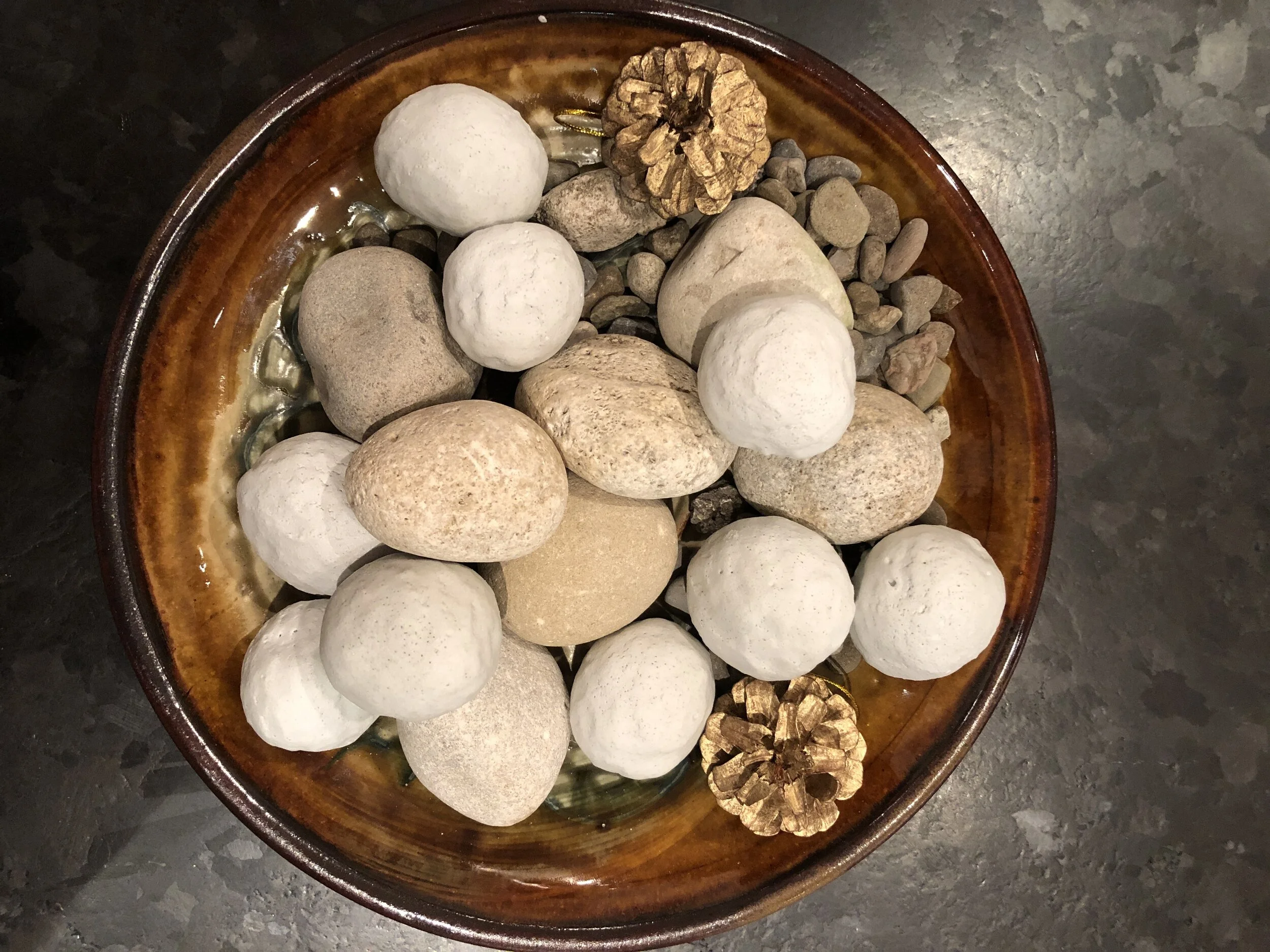Edible Stones
On our recent trip to Basque country, Spain, we had the unforgettable experience of dining at Andoni Luis Adurizis’s restaurant, Mugaritz, currently ranked number 9 on the “World’s 50 Best Restaurants”. He is considered by many, to be the natural heir to Ferran Adrià of El Bulli, once ranked #1 in the world a record 5 times and Spain’s, if not the world’s most pioneering chef.
The Mugaritz menu changes every year after months of research and development. For 2017, it was a 22 course small plate tasting menu presented without cutlery. In his view, these instruments have conditioned and distorted the sensory messages that foods transmit to the person eating them. Mugaritz dispenses with traditional dining norms in its quest to deliver a complete sensory and creative experience. I can’t begin to do the meal or restaurant justice, and instead refer you to this article.
After eating, I of course had to buy one of Andoni’s cookbooks, which included one of his many innovative recipes, “Edible River Stones”. Before describing my attempt at this recipe, a little background is in order. While researching edible coatings, the Mugaritz team became aware of “tuntas”. Tuntas were developed by the peoples of the Andean highlands between 2000 and 3000 years ago, as a means to conserve potatoes for periods of scarcity. For this, they submerged potatoes in flowing river water, sun dried them, and then allowed the potato to freeze. The result was a dehydrated potato with a whitish surface and velvety texture. When needed, they were rehydrated and cooked.
These potatoes in their dried state had such an evocative appearance, it inspired the Mugaritz team to try and replicate them. In the process, they further developed the idea of potatoes and the river, creating “edible river stones”.
To do so, they utilized kaolin (hydrated aluminum silicate powder), also known as china clay (marketed by Mugaritz as “Agalita”). Named after the hill “Kao-ling” found in China from which it was mined for centuries, kaolin is a soft white clay that is also mined in France, England, Germany, Czech Republic, and in the south-east United States. It is an essential ingredient in the manufacture of porcelain and china, and is widely used in many other products such as paper, medications, and cosmetics because of its very fine particle size, whiteness, and chemical inertness. These properties, as well as its very high purity, make it edible!
His edible river stones are a classic molecular gastronomy dish in a category some call "culinary deception" or "culinary trompe l’oeil". You may be more familiar with the term (French for "deceive the eye") as used in the art world referring to painting an object so realistically, the viewer is convinced it is real. As an aside, the technique dates back to the ancient Greeks, which gave rise to an oft-told ancient Greek story concerning the rivalry between two renowned painters, Zeuxis and Parrhasius. Zeuxis (b. 464 BC) produced a still life so convincing, birds flew down to peck at the painted grapes. Not to be outdone, Parrhasius asked him to judge one of his paintings that was behind a pair of tattered curtains in his study. When Zeuxis attempted to pull back the curtains to view the painting, he realized too late the curtains were actually part of Parrhasius's painting!
As I noted earlier, the team spends much of their time researching and developing new culinary techniques in the “Research and Development Kitchen of Mugaritz Restaurant”, some of which has resulted in scholarly publication. Indeed, the article in which they described this technique was published in the very first issue of the “International Journal of Gastronomy and Food Science”. It makes a fascinating read providing much insight into how the team approaches the culinary arts and sciences.
Paraphrasing, they took something apparently inorganic, a river stone, that unexpectedly would, with a gentle bite, give way to a surprisingly creamy, sweet, and vegetable consistency, a potato. They developed this idea further and played with the visual prejudices of the guest by juxtaposing real river stones on the same plate, which were similar in look, weight, and feel to the coated potato. The result was a culinary formulation and method to endow a traditional food with the capacity to evoke something unexpected and unique.
This was accomplished by creating a slurry of Kaolin and Lactose (to provide some sweetness to offset the clay) to which is added food colouring, to mimic the stones. Boiled baby potatoes are skewered, dipped in the slurry, and allowed to dry in an oven. This creates a warm, crisp, and of note, dry covering inside which is found a moist potato. Guests of course are not to see the process or the skewered potatoes drying so as not to ruin the effect.
I have attached some pictures showing my results, which although visually not exactly like the real stones (I need to work on the colour), were texturally and by weight, reasonably convincing!
Slurry of kaolin, lactose, and food colouring. Next time I will add pigment to vegetable oil before blending into slurry which will create a more realistic speckled colouring.
Skewered and dipped potatoes drying. This of course is done behind closed doors so as not to ruin surprise of the diners.
Final plating. The effect was pretty good in that the weight and feel of the coated potato was very much like the real stones. Slightly smaller stones and a better coloured coating will improve the effect.
Another attempt with change in colour of coating. A little more realistic but could still use some more speckling.



